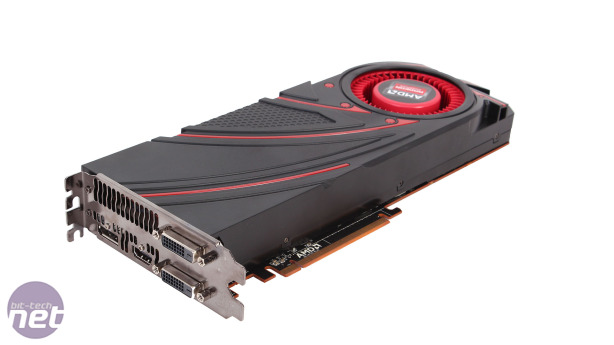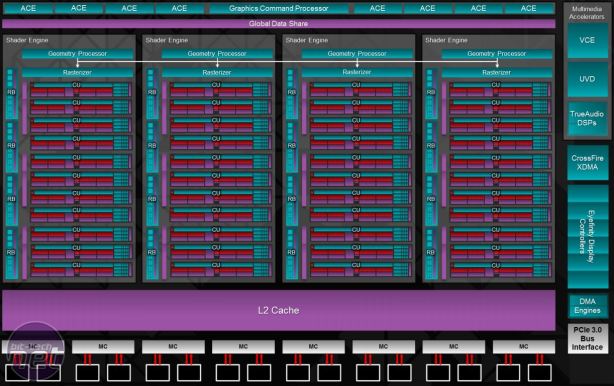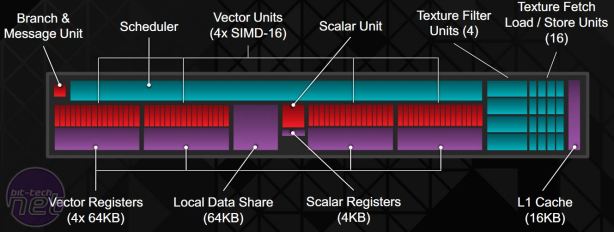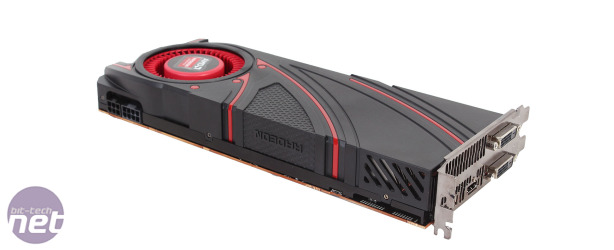AMD Radeon R9 290X 4GB Review
Manufacturer: AMDUK price (as reviewed): MSRP £449.99 (inc VAT)
US price (as reviewed): MSRP $549 (ex Tax)
The first stage of AMD's Volcanic Islands GPU launch, covering the Radeon R7 240 up to the Radeon R9 280X, brought with it new information about technologies such as TrueAudio and Mantle. From a pure hardware standpoint, however, it was a little disappointing given that it was mostly just a rebrand of existing HD 7000 series products. Today, however, we can finally pull the wrapping off of AMD's new flagship card, the Radeon R9 290X 4GB. It's got a new GPU and everything.
AMD's new top-tier single GPU card is launching on these shores with a retail price of £450. This means it actually undercuts the card its designed to compete with, Nvidia's GTX 780 3GB, by around £50 at the time of writing. This means AMD is opting, for now at least, to leave the somewhat ludicrous price bracket occupied by GTX Titan solely to Nvidia. AMD is also positioning the R9 290X as the card to have for gaming across multiple monitors or at 4K. It's worth noting that the final piece of Volcanic Islands pie, the R9 290, is still to launch, as this review is solely for the R9 290X.
Under the Hood
The R9 290 series Hawaii GPU is built on a 28nm process node and based on the existing Graphics Core Next architecture, which is no surprise given AMD's commitment to it through Mantle. With 6.2 billion transistors and measuring 438mm2, it's AMD's biggest GCN GPU yet and represents a 24 percent raw die size increase over the HD 7970. The GPU also now supports the MQSAD instruction set. This new GPU is fully enabled on R9 290X cards, with no sections left unused, and clocked at a rounded 1GHz.At a high level, Hawaii is organised mainly into four of what AMD has termed shader engines. Each of these features its own geometry processor, which is load balanced with the others and which still contains a geometry assembler, vertex assembler and tesselator. This means that the dual front-end design of Tahiti has been upgraded to a quad front-end one here.
Compute functionality has also been expanded thanks to a quadrupling of Tahiti's asynchronous compute engine (ACE) count from 2 to 8. These ACEs work in parallel with the main graphics command processor such that graphics and compute tasks can be processed at the same time. The ACEs have direct access to the L2 cache and global data share, and each of them can handle up to eight queues at once. AMD has evidently utilised GCN's scalable nature to produce a more parallel GPU that should improve its multi-tasking.
Hawaii's main processing grunt comes from its 44 Compute Units (11 per shader engine), a 37.5 percent increase over Tahiti. These are mostly unchanged, and as such each one features 16KB of L1 cache, four texture units and four of AMD's SIMD engines. These SIMD engines are the smallest individual unit of work in the GCN architecture, and consist of 16 stream processors a piece and a 64KB register file. The total texture unit and stream processors counts of Hawaii are thus 176 and 2,816 respectively. By comparison, the GTX 780 GPU has 194 and 2,304. The R9 290 series GPU's L2 cache is now 1MB, a 33 percent improvement, and likewise AMD boasts of a 1TB/sec maximum total L1/L2 bandwidth, again a 33 percent boost.
As well as the CUs, each geometry processor again has access to its own rasteriser, which doubles Tahiti's number. Four render back-end units per shader engine complete the graphics pipeline, and as each of these features four ROPs, there are now a whopping 64 in total, which is again twice that of the HD 7970 and R9 280X GPU. Consequently, the card can process almost twice as many pixels per second as these GPUs, 64Gpixels/sec to be precise (64 pixels per clock, 1GHz clock speed), which emphasises AMD's focus on multi-monitor and 4K set-ups here.
The jump from six to eight 64-bit memory controllers takes Tahiti's already high 384-bit memory interface to a massive 512-bit one. On the silicon, this is also at a higher density than before, so it actually takes up 20 percent less area despite being a wider bus. It's connected to 4GB of GDDR5, which is clocked at 5GHz for a total memory bandwidth of 320GB/sec – a 32GB/sec advantage over the GTX 780, GTX Titan, and Radeon HD 7970/R9 280X. The 1GHz lower memory clock speed is a result of the memory interface's higher density, but the figure AMD is keen to highlight is 50 percent more memory bandwidth per mm2 than the HD 7970 GHz Edition.
Crossfire burns its bridge
The R9 290X also comes with a new CrossFire DMA (direct memory access) engine in the CrossFire compositing block. This allows GPUs in such set-ups to fully communicate over PCIe without the need for an external CrossFire bridge. AMD also ensures us that no performance has been lost in the transition to a bridge-less design, indeed the bandwidth available over PCIe is far greater than over the existing brige implementations. Also the company boasts of scaling somewhere between 1.8x and 2.0x in modern games when using two R9 290X cards versus one.
Finally, also embedded within the Hawaii silicon is AMD's dedicated audio pipeline, TrueAudio, which you can read about in more detail in our R7 260X coverage. Naturally, thanks to the GCN architecture, Mantle is also supported, with AMD having recently released a blog post outlining some clarifications regarding its new API.

MSI MPG Velox 100R Chassis Review
October 14 2021 | 15:04













Want to comment? Please log in.